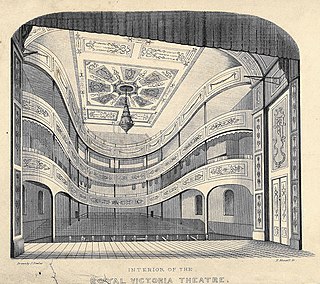
The Bank of New South Wales (BNSW), also known commonly as The Wales, was the first bank in Australia, being established in Sydney in 1817 and situated on Broadway. During the 19th century, the bank opened branches throughout Australia and New Zealand, expanding into Oceania in the 20th century. It merged with many other financial institutions, finally merging with the Commercial Bank of Australia in 1982 and being renamed to the Westpac Banking Corporation on 4 May that year under the Bank of New South Wales Act 1982.

Canberra Airport is an international airport situated in the district of Majura, Australian Capital Territory. It serves Australia's capital city, Canberra, as well as the nearby city of Queanbeyan and regional areas of the Australian Capital Territory and southeastern New South Wales. Located approximately 8 km (5.0 mi) from the city centre, within the North Canberra district, it is the ninth-busiest airport in Australia.

The Australian Open, owned and run by Golf Australia, is the oldest and most prestigious golf tournament on the PGA Tour of Australasia. The Open was first played in 1904 and takes place toward the end of each year.

Jessie Mary Grey Street was an Australian diplomat, suffragette and campaigner for Indigenous Australian rights, commonly referred to as Mrs Kenneth Street, but later dubbed "Red Jessie" by the media. As Australia's only female delegate to the founding of the United Nations in 1945, Jessie was Australia's first female delegate to the United Nations, where she ensured the inclusion of sex as a non-discrimination clause in the United Nations Charter. She was Lady Street from 1956, with the elevation of her husband Sir Kenneth Whistler Street.

Waverley Council is a Local government area in the eastern suburbs of Sydney, in the state of New South Wales, Australia. First incorporated on 16 June 1859 as the Municipality of Waverley, it is one of the oldest-surviving local government areas in New South Wales. Waverley is bounded by the Tasman Sea to the east, the Municipality of Woollahra to the north, and the City of Randwick in the south and west. The administrative centre of Waverley Council is located on Bondi Road in Bondi Junction in the Council Chambers on the corner of Waverley Park.

Cinesound Productions Pty Ltd was an Australian feature film production company. Established in June 1931, Cinesound developed out of a group of companies centred on Greater Union Theatres that covered all facets of the film process, from production to distribution and exhibition. Cinesound Productions established a film studio as a subsidiary of Greater Union Theatres Pty Ltd based on the Hollywood model. The first production was On Our Selection (1932), which was an enormous financial success.

Sir James John Joynton Smith, commonly referred to simply as Joynton Smith, was an Australian hotelier, racecourse and newspaper owner, and Lord Mayor of Sydney.

Carla Maria Zampatti, was an Italian-born Australian fashion designer and businesswoman, and executive chair of the fashion label Carla Zampatti Limited.
Frank Stafford Phillips was an Australian professional golfer. He was rated one of the best ball strikers of his era winning the 1957 and 1961 Australian Opens. He was a Life Member of the PGA of Australia from 2002.
EVT Limited is an Australian company which operates cinemas, hotels, restaurants and resorts in Australia, New Zealand and Germany.

James Merriman was an Australian cooper, whaler, publican, shipowner, alderman, mayor of Sydney and member of the New South Wales Parliament.
The New South Wales PGA Championship was a professional golf tournament played in New South Wales, Australia between 1923 and 2015.
The Imperial Arcade was a commercial building in Sydney, Australia, designed by prominent Sydney architect Thomas Rowe opened in 1891 on the site now occupied by Westfield Sydney.

The Royal Victoria Theatre, often referred to as the Victoria Theatre or The Old Vic, was a theatre in Sydney, Australia, the first large theatre in the city. It opened in 1838; operas, plays, pantomimes and other events were held, and leading entertainers performed at the theatre. It was destroyed by fire in 1880.

Hannah Maclurcan was a cook and hotelier in Australia. She was the author of the very popular cookbook "Mrs. Maclurcan's cookery book : a collection of practical recipes specially suitable for Australia". She is also known as Hannah Maclurcan Lee.
Farmer and Company, commonly known as "Farmer's", was a retail store in Sydney, Australia.
Herbert Osborn Dennis was a Victorian-born Australian architect who largely practiced in Sydney and is known for his early domestic designs and for his later substantial inner city industrial buildings showcasing early modernism.
James Thomas Gussey was a New Zealand-born trumpeter who had a successful career in Australia. He is best remembered as conductor of the ABC Dance Band, performing on ABC radio and television networks.

The Hotel Metropole was a hotel located on a block bounded by Bent, Phillip, and Young Streets in the central business district of Sydney. From its opening in January 1890, it was considered as one of Sydney's premier hotels, and catered towards rural visitors to the city. Originally designed by architects Sheerin & Hennessy and Twentyman & Askew, the hotel was remodelled and extended in 1929 by Henry Budden. With the land value outstripping the profits gained by the hotel by the late 20th century, the hotel was closed in May 1970 and demolished later the same year to make way for a modernist office development, CAGA House.













